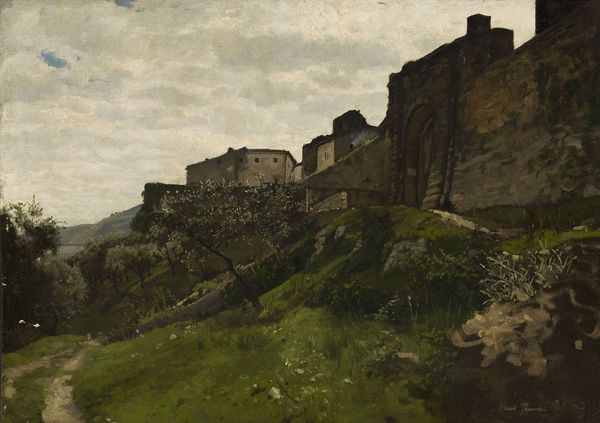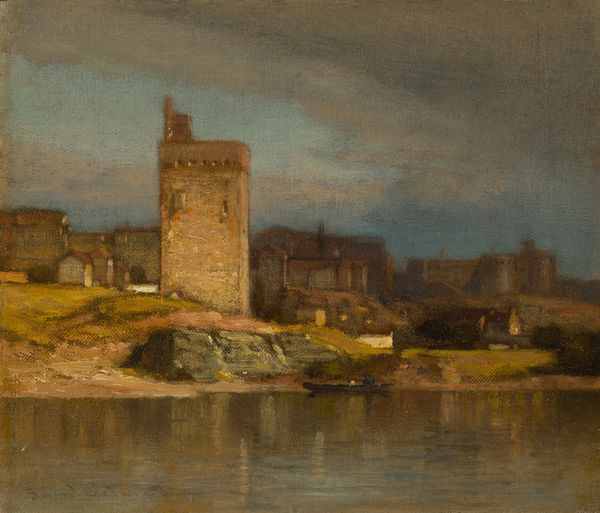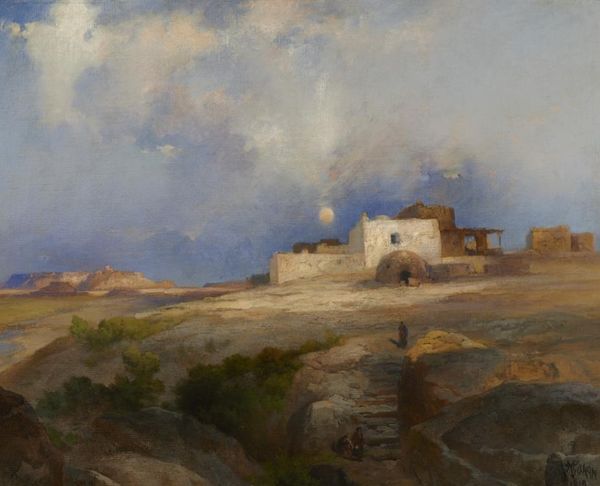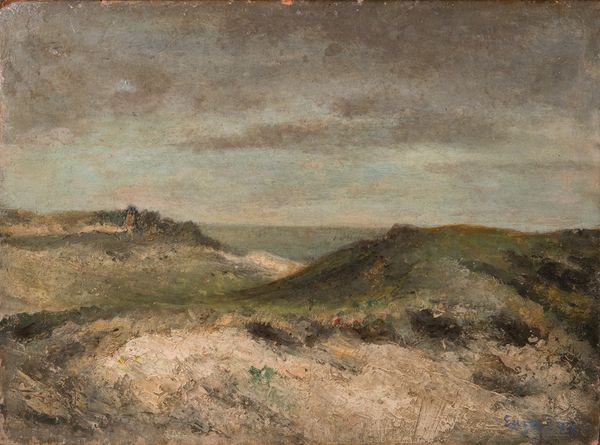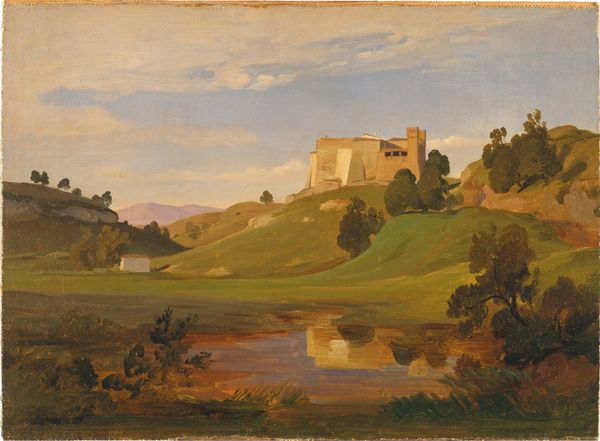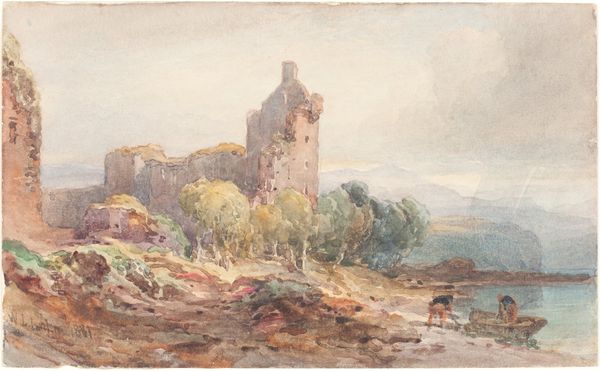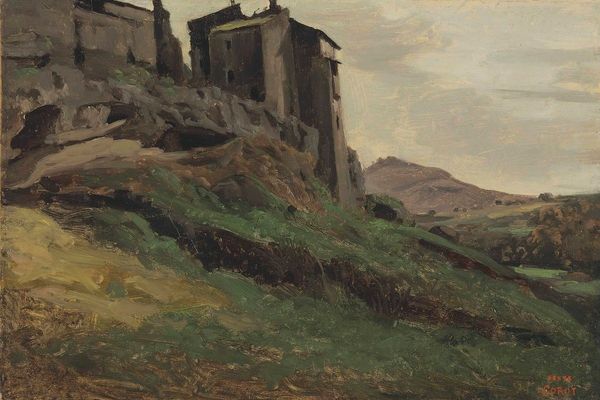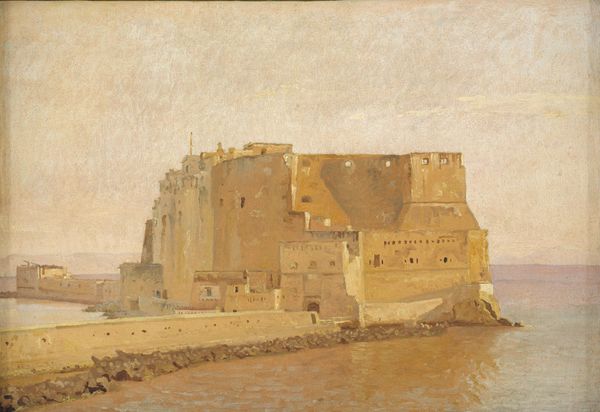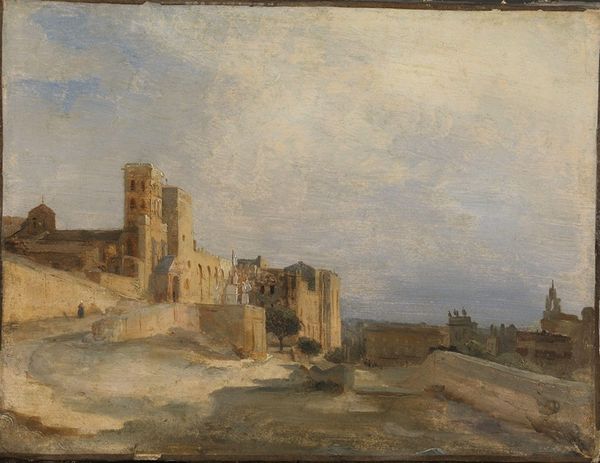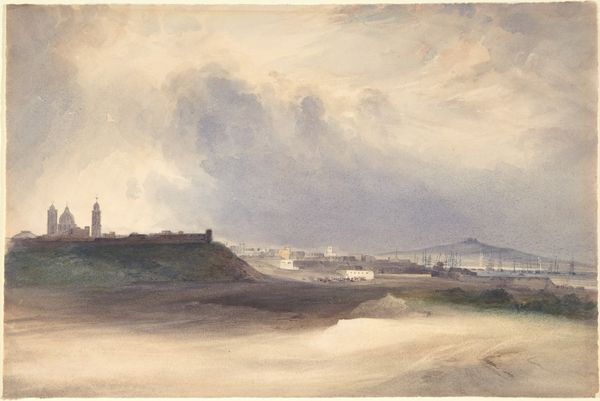
painting, oil-paint, architecture
#
neoclacissism
#
painting
#
oil-paint
#
landscape
#
oil painting
#
romanticism
#
history-painting
#
architecture
Dimensions: overall: 27.9 x 33 cm (11 x 13 in.) framed: 38.7 x 48.3 x 5.7 cm (15 1/4 x 19 x 2 1/4 in.)
Copyright: National Gallery of Art: CC0 1.0
Curator: Good morning, I'd like to draw your attention to Léon-François-Antoine Fleury's oil on canvas work, "The Tomb of Caecilia Metella," created around 1830. Editor: Oh, it’s steeped in melancholy! The colour palette just vibrates with the sadness of faded grandeur, even though it's rendered on what looks like a glorious afternoon. There’s something quite touching about the vulnerability of these historical structures under that expanse of sky. Curator: Indeed. Fleury's painting demonstrates an acute awareness of formal structure, a Neoclassical fascination rendered through Romantic sensibility. Consider the calculated balance of the composition. The titular tomb’s cylindrical mass is carefully offset by the jagged lines of what seems to be a fortress, forming a dialogue between organic form and architectural rigor. Editor: The architectural bits could crush me. It also creates an echo; they amplify the quiet human drama that's about to befall these...monumental stones. Plus, you can almost feel the quiet shift from the hardiness of the construction in the architecture itself and how little we look now compared to them! Curator: I agree, but this shift between stability and…ephemerality is precisely what generates much of the painting’s meaning. Fleury’s technique allows the architectural forms—historical and stable as they are—to be swallowed by the landscape and rendered through the emotional palette of the sky. We should observe the colour, which contributes further; look at the ochres and browns used to express decay set against the purples that articulate atmospheric change. Editor: Yeah, those muted, almost bruised colors create such a potent mood. It's like the past is exhaling. Do you reckon Fleury felt the tug of time keenly as he painted this? There's just the hint of an idea, a memory, in it…it makes me think what ruins are. The composition does something that resonates with how we’ve gone a bit rusty, a bit broken around the edges and weathered by time. And, let's be frank, pretty much everything in history eventually collapses into an exhausted heap. Curator: An intriguing perspective! For Fleury, the value likely existed in preserving an architectural record of that potential collapse through painting, or possibly highlighting its timeless, unchanging strength. In either case, our painter renders those complexities in simple, masterful brushstrokes. Editor: So while you might look at the architecture and analyse the Neoclassical, Fleury shows we shouldn't ignore feelings because if they're like me, their feeling overwhelmed by melancholy. The tomb invites you to wander the paths of time... which is lovely, but maybe not such an enlightening place to live... Thanks, Lèon!
Comments
No comments
Be the first to comment and join the conversation on the ultimate creative platform.

